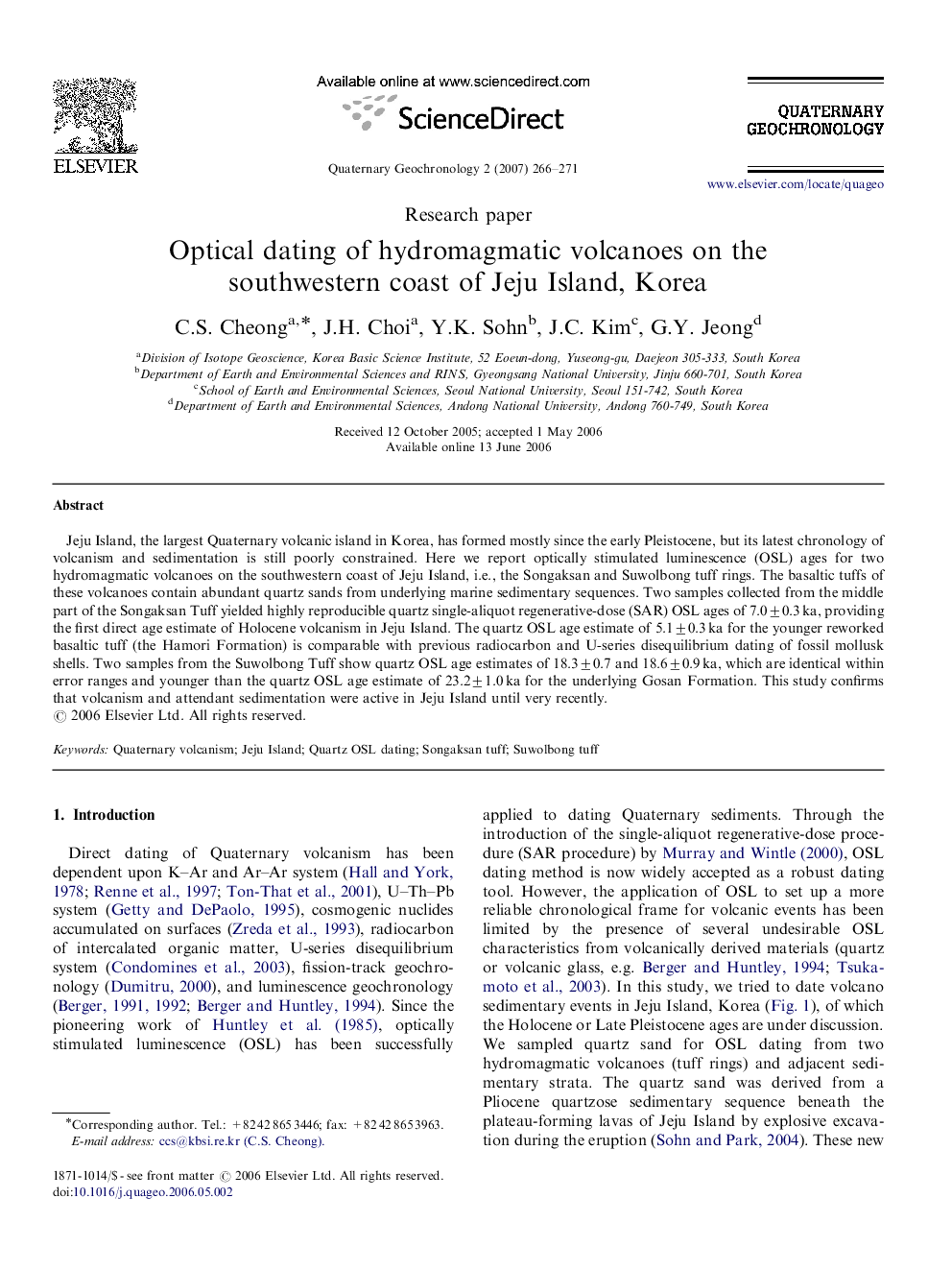| Article ID | Journal | Published Year | Pages | File Type |
|---|---|---|---|---|
| 4725414 | Quaternary Geochronology | 2007 | 6 Pages |
Jeju Island, the largest Quaternary volcanic island in Korea, has formed mostly since the early Pleistocene, but its latest chronology of volcanism and sedimentation is still poorly constrained. Here we report optically stimulated luminescence (OSL) ages for two hydromagmatic volcanoes on the southwestern coast of Jeju Island, i.e., the Songaksan and Suwolbong tuff rings. The basaltic tuffs of these volcanoes contain abundant quartz sands from underlying marine sedimentary sequences. Two samples collected from the middle part of the Songaksan Tuff yielded highly reproducible quartz single-aliquot regenerative-dose (SAR) OSL ages of 7.0±0.3 ka, providing the first direct age estimate of Holocene volcanism in Jeju Island. The quartz OSL age estimate of 5.1±0.3 ka for the younger reworked basaltic tuff (the Hamori Formation) is comparable with previous radiocarbon and U-series disequilibrium dating of fossil mollusk shells. Two samples from the Suwolbong Tuff show quartz OSL age estimates of 18.3±0.7 and 18.6±0.9 ka, which are identical within error ranges and younger than the quartz OSL age estimate of 23.2±1.0 ka for the underlying Gosan Formation. This study confirms that volcanism and attendant sedimentation were active in Jeju Island until very recently.
